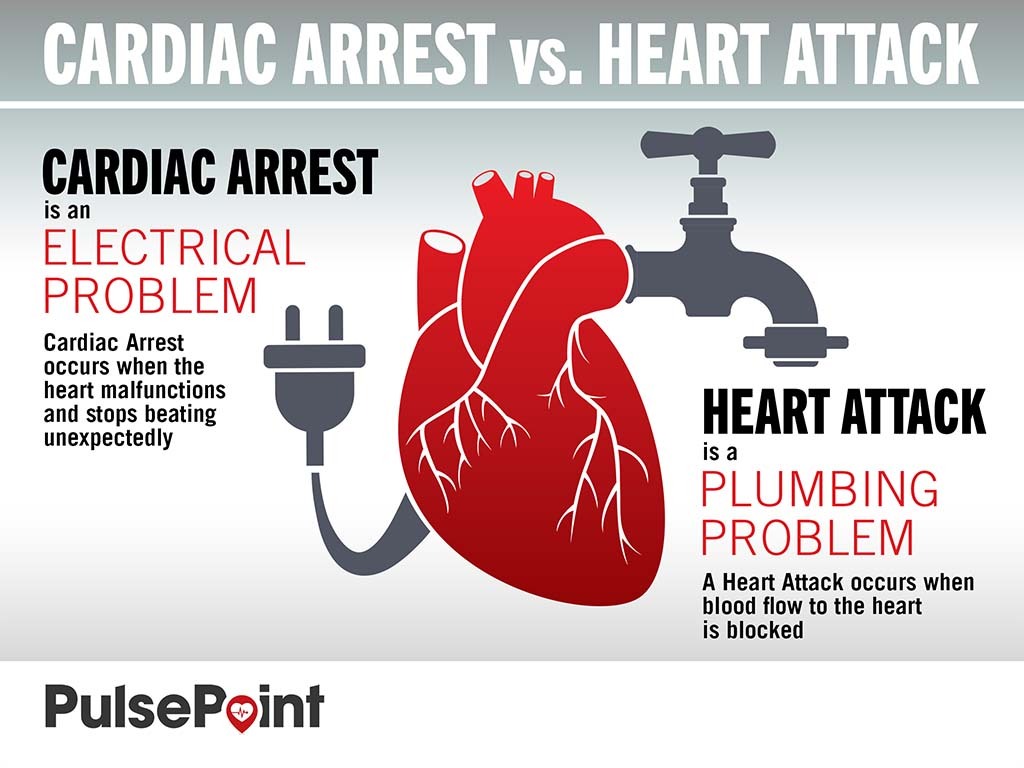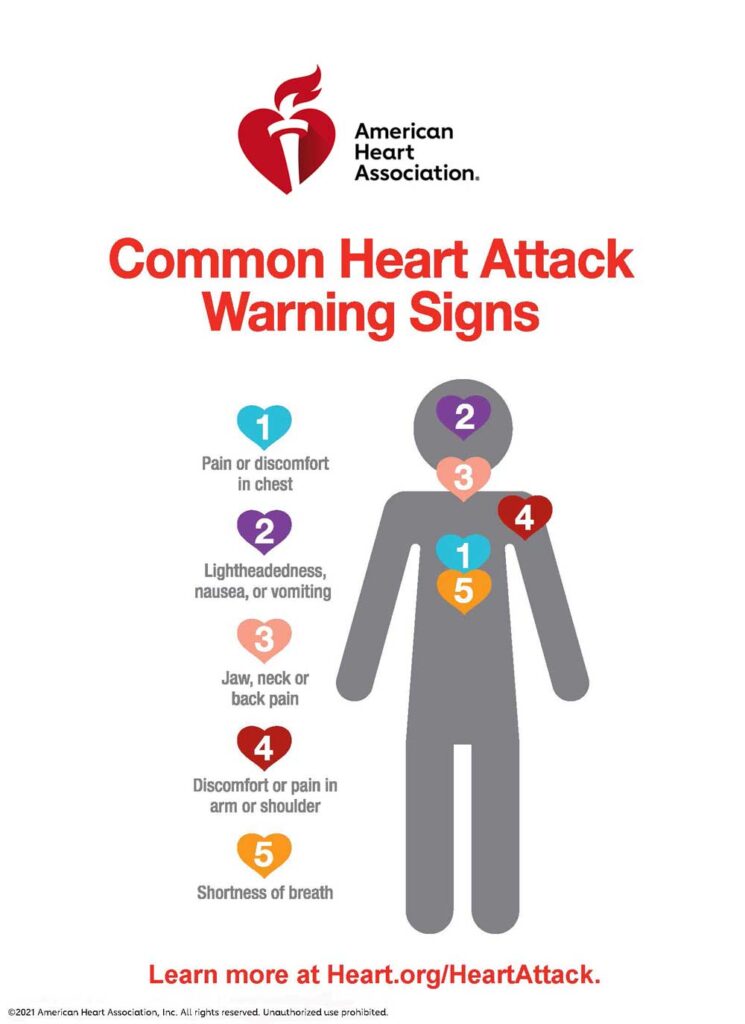A Guide for Your Loved Ones
We’ve created a guide for you to share to celebrate all things hearts – Valentine’s Day and American Heart Month. 🥰
As a physician family, we always assumed that the doctor among us would handle any medical issues we encountered. As silly as it sounds in retrospect, we never thought about what to do if the medical issue happened to him! Plus, medical professionals spend much time at work, away from family and friends.
You can’t always be there, but you can teach those you love to recognize the difference between a heart attack, stroke, and sudden cardiac arrest and what to do if faced with these situations.
The Difference Between a Heart Attack and a Cardiac Arrest

Image Credit: https://www.pulsepoint.org/
Cardiac Arrest
Be aware of these symptoms:
- SUDDEN LOSS OF RESPONSIVENESS: If someone doesn’t respond when you tap their shoulders, something serious may be happening.
- NO NORMAL BREATHING: Check if the person is taking a normal breath. Tilt their head up and observe for at least five seconds.
What to do:
If you come across someone in cardiac arrest, it’s time to start hands-only CPR and call 9-1-1. Administer high-quality CPR by pushing down at least two inches in the center of the chest at a rate of 100 to 120 pushes per minute. After each push, let the chest come back up to its normal position. You can make a difference!
Heart Attack
Key symptoms to look out for:
- CHEST DISCOMFORT: Most heart attacks involve uncomfortable pressure, squeezing, fullness, or pain in the center of the chest that lasts more than a few minutes (or comes and goes).
- DISCOMFORT IN OTHER AREAS: Pain or discomfort can also occur in the arms, back, neck, jaw, or stomach.
- SHORTNESS OF BREATH: This can happen with or without chest discomfort.
- OTHER SIGNS: Keep an eye out for breaking out in a cold sweat, feeling nauseous, or experiencing lightheadedness. It’s important to note that women may experience different symptoms than men, which can sometimes make it difficult to recognize a heart attack.

What to do:
If you or someone you know experiences these symptoms, don’t hesitate to call 911! Even if you’re unsure if it’s a heart attack, it’s always better to be safe and get it checked out. Time is crucial when it comes to saving lives and calling 9-1-1 is often the fastest way to receive lifesaving treatment.
Stroke
Remember the acronym F.A.S.T. for stroke symptoms:
- FACE DROOPING: Take note if one side of the face droops or feels numb. You can ask the person to smile to check for any irregularities.
- ARM WEAKNESS: Is one arm weak or numb? Ask the person to raise both arms and see if one drifts downward.
- SPEECH DIFFICULTY: Is their speech slurred, are they unable to speak, or is it hard to understand them? Ask them to repeat a simple sentence, like “the sky is blue,” and see if they get it right.
What to do:
If someone displays any of these symptoms, even if they seem to go away, it’s crucial to call 9-1-1 and get them to the hospital immediately. Every moment a stroke goes untreated, brain tissue is being damaged. Don’t delay!
You’ve Got This 💪
Remember, quick action is essential in these situations, so don’t hesitate to seek the help of medical professionals. 🚑
Armed with a little bit of knowledge, you can be prepared to take care of yourself and your loved ones. 💫

